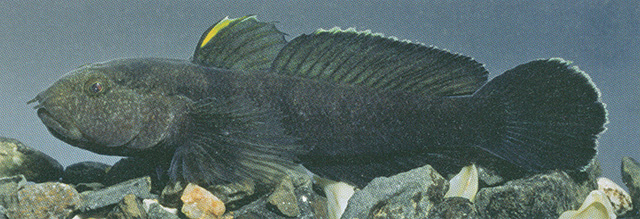| Gobiidae (Gobies), subfamily: Gobiinae |
| 9 cm SL (male/unsexed) |
|
demersal; freshwater; brackish |
| Eurasia: Azov and Caspian Sea basins; in Volga, native in delta, reaching up to Lake Rybinskoye. Populations from western Caucasus coast in Russia and Georgia probably belong to this species. |
|
This species is distinguished from its congeners by the following characters: head length 29-31% SL; eye diameter 16-21% HL; anal rays 14-16; total scales in midlateral series 43-49 (Ref. 59043). |
| Inhabits a variety of slow-flowing or still waters; usually associated with dense vegetation or coarse rocks. Spawns for the first time at 1-2 years, and usually only for 1 to 2 seasons, April-August with females spawning more than once during a season. Males guard the eggs which are deposited in cavities; larvae and juvenile are benthic. Feeds on benthic invertebrates. It is invasive in Volga where reportedly, the spreading was due to canalization of main river and reservoirs or slow-flowing waters created by hydroelectric plants (Ref. 59043). |
|
Least Concern (LC); Date assessed: 01 January 2008 Ref. (130435)
|
| harmless |
Source and more info: www.fishbase.org. For personal, classroom, and other internal use only. Not for publication.

